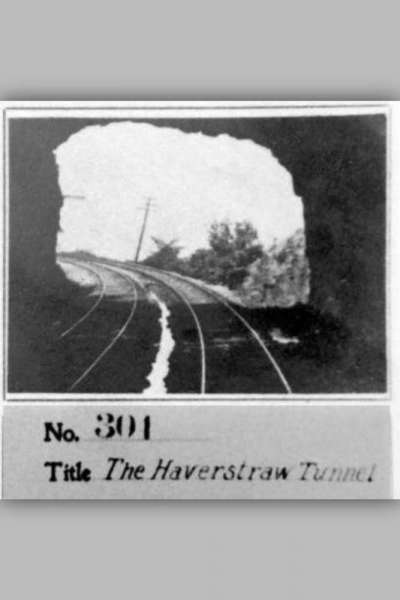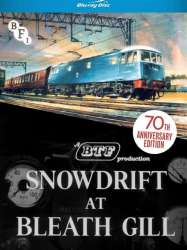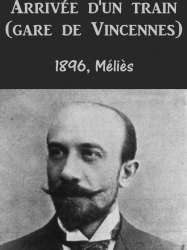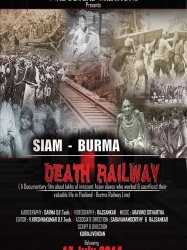The Haverstraw Tunnel is a american film of genre Documentary released in USA on 15 june 1897
The Haverstraw Tunnel

If you like this film, let us know!
- Infos
- Casting
- Technical infos
- Photos
- Videos
- Film quotes
- Characters
- Music
- Awards
The Haverstraw Tunnel is an early black and white silent film released in 1897 by the American Mutoscope Company. It is considered to be one of the first examples of a phantom ride (along with Alexandre Promio's Leaving Jerusalem by Railway the same year) and features a train travelling along the West Shore Railroad in Rockland County, New York and then through the eponymous tunnel.
Comments
Leave comment :
Suggestions of similar film to The Haverstraw Tunnel
There are 8969 with the same cinematographic genres, 7108 films with the same themes (including 32 films with the same 3 themes than The Haverstraw Tunnel), to have finally 70 suggestions of similar films.If you liked The Haverstraw Tunnel, you will probably like those similar films :

Origin USA
Genres Documentary
Themes Transport films, Films about the labor movement, Rail transport films, Documentary films about politics, Documentary films about technology, Political films

Journey Into Spring (1958)
, 28minutesOrigin United-kingdom
Genres Documentary
Themes Transport films, Rail transport films, Documentary films about technology
Rating71%






Taken for a Ride (1996)
, 55minutesOrigin USA
Genres Documentary
Themes Environmental films, Transport films, Films about automobiles, Rail transport films, Documentary films about business, Documentary films about environmental issues, Documentary films about technology, Road movies
Rating78%





Taken for a Ride begins with interviews on the inefficiencies and congestion on Los Angeles' highways. Next, the film displays a variety of archival footage on streetcar systems around the United States, demonstrating that streetcars were a widespread and efficient means of transportation. The film continues into a description of the General Motors streetcar conspiracy, starting with a history of National City Lines and Pacific City Lines and General Motors' investment in both companies. The film builds the argument that streetcar systems purchased by these companies were deliberately sabotaged through service reductions and fare increases, then replaced with profitable, less convenient, bus systems. Next, the film makes a connection between this conspiracy and the construction of the Interstate Highway System and the suburbanization of America in the face of the Highway revolts in the 1960s and 1970s. The film ends with footage of the reduction of Philadelphia's trolleybus system at the time of filming.

Snowdrift at Bleath Gill (1955)
, 10minutesOrigin United-kingdom
Genres Documentary
Themes Transport films, Rail transport films, Documentary films about technology
Actors Deryck Guyler
Rating70%






Festival Express (2003)
, 1h30Origin United-kingdom
Genres Musical theatre, Documentary, Historical, Musical
Themes Films about music and musicians, Transport films, Rail transport films, Documentary films about music and musicians, Documentaire sur une personnalité, Documentary films about technology, Musical films
Actors Levon Helm, Robbie Robertson, Bonnie Bramlett
Rating74%





Cinq jours durant l'été 1970, des artistes américains aussi légendaires que Janis Joplin, The Band ou encore The Grateful Dead voyagèrent à travers le Canada, se livrant à de superbes prestations scéniques à Toronto, Winnipeg et Calgary.

Surfing Soweto (2007)
, 1h25Origin South africa
Genres Documentary
Themes Transport films, Rail transport films, Documentary films about technology
Rating67%





Surfing Soweto is the story of a forgotten generation: Bitch Nigga, Lefa and Mzembe are three of the most notorious train surfers in Soweto. They represent a generation of alienated youth, born during the glowing promise after the demise of apartheid and yet without the skills or wherewithal to reap the benefits of their newly-won freedoms. Surfing Soweto shows them riding on the top of trains (train surfing) which in South Africa is known as "ukudlala istaff", ducking as they hurtle past lethal electrical cables, and also in the intimacy of their homes and families.

Terminus (1961)
Directed by John Schlesinger
Genres Drama, Science fiction, Documentary, Action, Adventure, Horror
Themes Transport films, Rail transport films, Documentary films about technology
Actors Peggy Ashcroft, Margaret Lacey, John Schlesinger
Rating70%






Directed by Georges Méliès
Origin France
Genres Documentary
Themes Transport films, Rail transport films, Documentary films about technology
Rating49%






John Betjeman Goes By Train (1962)
, 10minutesOrigin United-kingdom
Genres Documentary
Themes Films about writers, Transport films, Rail transport films, Documentaire sur une personnalité, Documentary films about technology
Rating72%






Siam Burma Death Railway (2014)
Origin Singapore
Genres Documentary
Themes Transport films, Rail transport films, Documentary films about law, Documentary films about war, Documentary films about historical events, Documentary films about technology, Political films, Documentary films about World War II
This documentary film opens with WWII war between the Allied forces, comprising America – Australia – Netherlands, under the leadership of Great Britain, fought against the Axis countries of Germany – Japan and Italy. On such super-power Japan, which had been waiting for a long time, expecting an opportunity to materialize its plan of Greater Asia. It's Japan’s dream plan to extend its reign via Singapore, Malaya, Thailand and Burma up to India. On 8th Dec 1941, Singapore fell at the hands of Japan, which had begun the war in the name of Asian independence. Immediately, Japan decided to carry out its plan of Greater Asia. As a first step, Japan planned to lay the Siam – Burma railway line connecting Siam(i.e., Thailand) and Myanmar.
 Connection
Connection